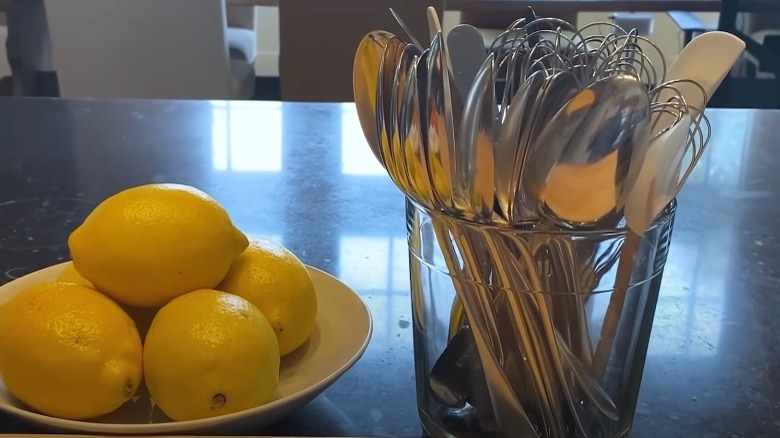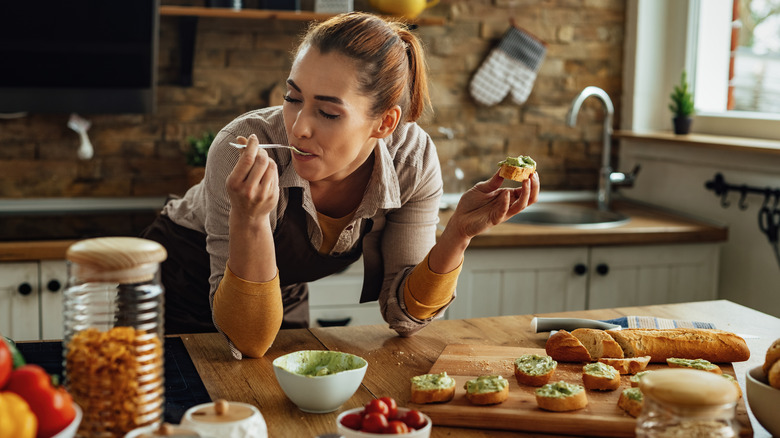The One Utensil Ina Garten Keeps By Her Stove At All Times
Now more than ever, we are paying attention to germs and how we spread them. What was once an innocent act of tasting a pot of sauce with the same wooden spoon used to stir it or blowing out birthday candles can be seen as hostile or criminal in our post-pandemic world.
Like professional chefs (but definitely not our grandparents who used a finger), celebrity chef Ina Garten always keeps tasting spoons nearby to sample, pick up, or stir food as it's cooking. Along with her Boos cutting board and ingredients that are better at room temperature, like citrus and garlic, Garten keeps a jar of antique silver-tasting spoons near the stove so she doesn't have to stop and search for a clean utensil while cooking— sanitary and efficient.
While Garten's tasting spoons look decorative, like a silver flower arrangement that requires polishing, experienced chefs have been taught to taste their food often, at the beginning, middle, and end of the cooking process, especially before serving, to have more control over the finished dish and home cooks should too.
Why you should taste along the way
Recipes are a great beginning, a suggestion, but seasoned cooks like Garten know how to improvise along the way, and that skill comes with experience and a lot of tasting. Seldom does an ingredient taste the same each time it's used, especially when purchasing fruits and veggies out of season. Tasting the components before you assemble a salad or simmer the Sunday gravy meat allows you to anticipate adjustments like balancing the bitterness of a fresh tomato or compensating for unsweet carrots with a bit of sugar.
As you would use your sense of smell to prevent garlic from burning or your vision to know when the onions are translucent or pancakes should be flipped, aside from ingredients like raw poultry, eggs, and flour, tasting is a critical part of cooking. It is easier to adjust the seasoning slowly as you cook, then change the flavors at the end. And it's best to trust your palate than a rogue recipe when it comes to adding salt, especially when switching between table, Kosher, and sea salt since they have different salinities. Even jumping between brands like Morton and Diamond Crystal Kosher salt makes a big difference.
Always use a clean spoon
While you can get away with repeatedly using the same spoon to taste when cooking for yourself or an unsuspecting partner, the practice is unacceptable in professional kitchens per the FDA's U.S. Public Health Service Food Code and frowned upon at dinner parties. Reusing tasting spoons can cross-contaminate a dish leading to foodborne illnesses like E.Coli and Salmonella. Double dipping or using your finger can introduce allergens when sampling multiple recipes and harmful bacteria to a cooked dish, not to mention a sick cook's illness.
For years, professional kitchens relied on disposable spoons to prevent reusing dirty ones, but that method has obvious environmental and cost implications. If a jar of vintage silver spoons is outside your budget, try the ladle method, which uses two spoons; a sampling and a tasting spoon. Drop a sample of the dish onto a tasting spoon using the stirring spoon without letting the two utensils touch. Cooks can taste from a single tasting spoon repeatedly without risking cross-contamination and limit the extra spoons they need to have on hand.



